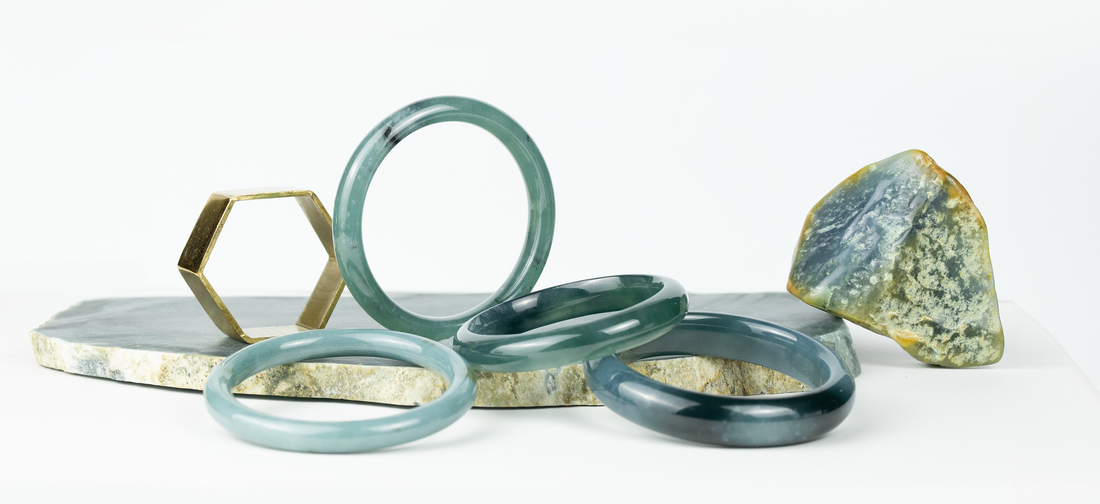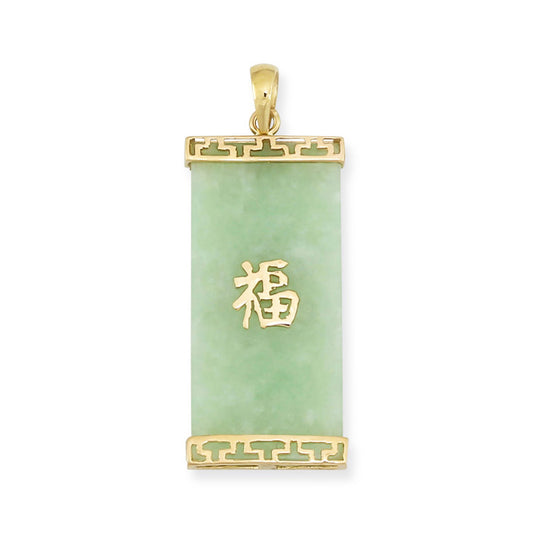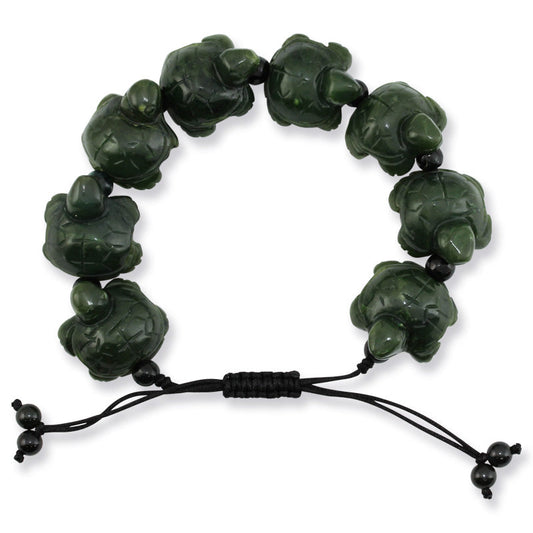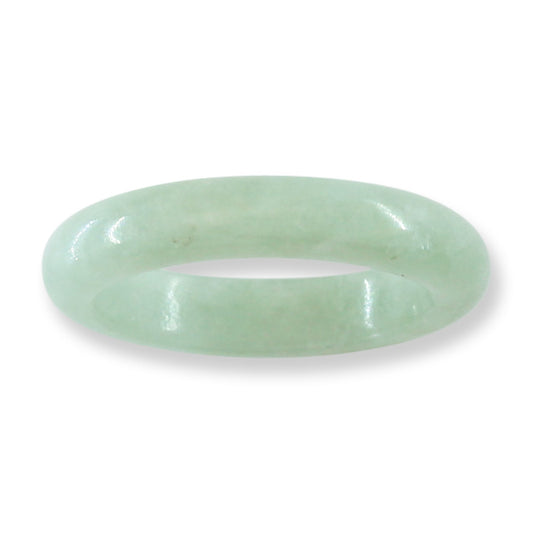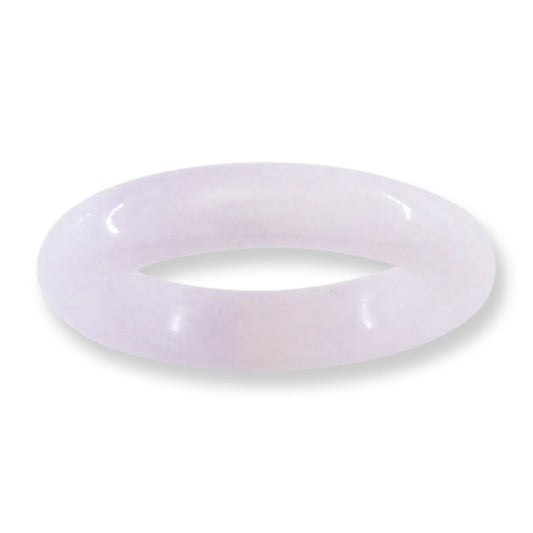Move over Burma - Guatemalan Jade is making waves. Learn about the jade industries' best kept secret, and how Guatemala's not-so-hidden gem is contributing to a Jade Renaissance in America.

Guatemalan Jade is having a moment --
Just this year so far, jade has been highlighted in the Roskin Gem News Report, the New York Times, JCK Online, National Jeweler, AGTA ePrism and even on Poshmark's jewelry industry podcast In The Loupe.
Is jade getting more attention all of a sudden?
Well, we wouldn't say it's sudden -- but rather it's been building gradually over the past few years, and it's hitting the industry's radar hard in 2025.
Part of the fascination with jade is driven by the unique look of Guatemalan jade -- a grey-blue-green hue with albite "snowflake inclusions" that can be visually distinguished from traditional Burmese material. While Guatemalan jade has been in circulation for decades, the translucent qualities of this material are just now capturing the attention of the American jewelry market.
And we're here for it.

What is Guatemalan jade?
There are two gemstones that are gemologically considered jade in the USA: Nephrite Jade and Jadeite Jade. The jade coming from the Motagua River region in Guatemala is jadeite jade, also known as fei cui.
Guatemalan jade comes in a wide range of colors, most notably it's iconic grey-blue-green color, but also purple (called lilac or lavender), yellow, white, black, and more.
 Mason-Kay's independent sales reps, Hun'r and Jordan, visited Jade Maya in Guatemala in November of 2024 to see Guatemala's jade industry firsthand, and experience the impact it has on the people involved in mining it. Their experience visiting a jade mine and attending the Congress of Latin American Jade Carvers is detailed in this video.
Mason-Kay's independent sales reps, Hun'r and Jordan, visited Jade Maya in Guatemala in November of 2024 to see Guatemala's jade industry firsthand, and experience the impact it has on the people involved in mining it. Their experience visiting a jade mine and attending the Congress of Latin American Jade Carvers is detailed in this video.
"Guatemala has it's own jade culture." Jordan explains. "They have built an economy around preserving their history through the art of modern jade carving." Having visited Jade Maya, a vertically integrated company, Jordan and Hun'r were able to visit Guatemalan jade sellers, carvers, and miners -- as well as the tourist destination Hacienda Santiago, where visitors can experience bed-and-breakfast-style accomodations on the premises of Jade Maya's quarry.
 At least seven different Mesoamerican civilizations traded jade between 1500 BC and 1500 AD. Many Olmec, Maya, and Aztec artifacts have been uncovered and preserved -- and even replicated to celebrate these ancient cultures. Customers are enthralled to learn that Guatemalan jade was lost to history after the Spanish conquest, leaving Central American peoples without a memory of the stone for over 500 years.
At least seven different Mesoamerican civilizations traded jade between 1500 BC and 1500 AD. Many Olmec, Maya, and Aztec artifacts have been uncovered and preserved -- and even replicated to celebrate these ancient cultures. Customers are enthralled to learn that Guatemalan jade was lost to history after the Spanish conquest, leaving Central American peoples without a memory of the stone for over 500 years.
A story beautifully told in Gerard Helferich's book, Stone of Kings: In Search of the Lost Jade of the Maya, the Guatemalan jade deposits remained undiscovered until the 1970's when Jay and Mary Lou Ridinger (then Johnson) spent months prospecting in search of a stone that scientists once believed they would never find.
If you're reading this article, you probably understand what makes Guatemalan jade so appealing: It's history, it's unusual color, and it's symbol of a revived culture -- one that could not be totally destroyed in the face of adversity.
Guatemalan jade really has to be seen and felt to truly convey how special it is, so we recommend watching these videos to learn more about it's appearance: Incredible Jades of the Tucson Gem Shows, JOTT livestreams Guatemalan Jade Bangles and Blue Jade Qualities and Origins.
But if you want some cold, hard facts -- here are frequently asked questions about Guatemalan jade:
Can you wear Guatemalan jade everyday?
Definitely. Jadeite jade has a hardness of around 6-7, which is as hard as quartz. This means jadeite jade is suitable for everyday wear, and you won't have to worry about scratching the stone when sitting at your desk or enjoying an evening out.
Additionally, jadeite jade is one of the toughest gemstones in the world. Up to 24x harder to break than a diamond, jadeite jade is extremely durable and suitable for everyday wear. Keep in mind, ancient civilizations revered jade for it's toughness -- they used it for tools and weapons because of it's strength! Some civilizations are even considered to have had a Jade Age.
Does Guatemalan jade change color?
A very popular belief about Guatemalan jade is that it changes color. This is simply not true. Chemically, jade from Guatemala is not much different from jade from Myanmar. The color may be different (not always though, some pieces from different locales can look identical!), but the chemical composition and crystal structure are very similar if not the same.
Learn more in our article Does Jade Change Color?
Is Guatemalan jade treated?
At this time, polymer-impregnated jade from Guatemala has not been seen on the market. Could this change? Possibly. There is a common myth that Guatemalan jade can't be treated, but there is no reason to believe this is true.
Currently, Guatemalan jade does not command so high a value as to justify treating jadeite jade of any origin to mimic it. This could certainly change in the near future, depending on the market.
**Note: It is possible that jade is being treated to look like Guatemalan blue-green material, but that this hasn't been caught by a laboratory yet.
Are there Guatemalan jade simulants?
Yes, but the threat of Guatemalan simulants isn't as great as the threat of Burmese jade simulants. At this time, the most common simulant of Guatemalan jadeite jade is grossular garnet. As always, shop with a seller you trust that can verify the identify of your gemstones.
Is Guatemalan jade less valuable?
This is a difficult question to answer. Jade is not priced per carat, and there are no universal grading standards for jade. Additionally, each piece of jade is priced individually based on a number of factors: Quality (Translucency, Color - Hue, Tone, and Saturation, and Texture - Luster, Inclusions, Color Consistency, etc), size, carving, matching, and more. There aren't a lot of hard and fast rules for jade valuation. Burmese jade, for instance, can range in value from $20 into the tens of millions.
What we do know is that the market has deemed true-green the most desirable color of jadeite jade, and is therefore willing to pay the highest prices for this. There is some highly translucent, true-green jadeite jade coming out of Guatemala -- but as a rule, it can be distinguished visually from Burmese material. If a piece of Guatemalan jade, however, looks identical to Burmese material -- at this time, there is no reason to think it will command a lower price due to origin alone.
Many customers consider Guatemalan jade to be less valuable because most jadeite jade from Guatemala is not true-green, and therefore commands a lower price than true-green stones where all other factors are equal. This question is answered more clearly and more deeply in this video from Jewels of the Trade:
What is the future of Guatemalan jade?
No one knows for sure. At Mason-Kay Jade, we think this is just the beginning of demand for this material. Men love it for it's color, women love it, and it's affordable enough right now that a customer can buy a high-quality, durable and translucent bangle in Guatemalan blue-green for a lower price than other colors of equal translucency.
Additionally, the color is closely associated with Central American culture, which is close to the hearts of many American shoppers. For some US customers, a love of China may drive demand for Burmese jade. Similarly, a love of Mexico and Guatemala may drive demand for Guatemalan jade because of it's ties to Maya and Aztec culture. Mexican culture has had tremendous influence on American life, and is celebrated in the USA. Demand for jade at the individual level may be driven by a love of history, appreciation for culture, or personal experiences in Central America.
What we do know for sure is that at Mason-Kay Jade, we have Guatemalan jade and it's here to stay. We can't wait to see awareness of this incredible stone grow, and we are proud to be a part of an industry that supports the families in Mexico and Guatemala involved in mining and selling this stone.
Learn more about Guatemalan jade here.

